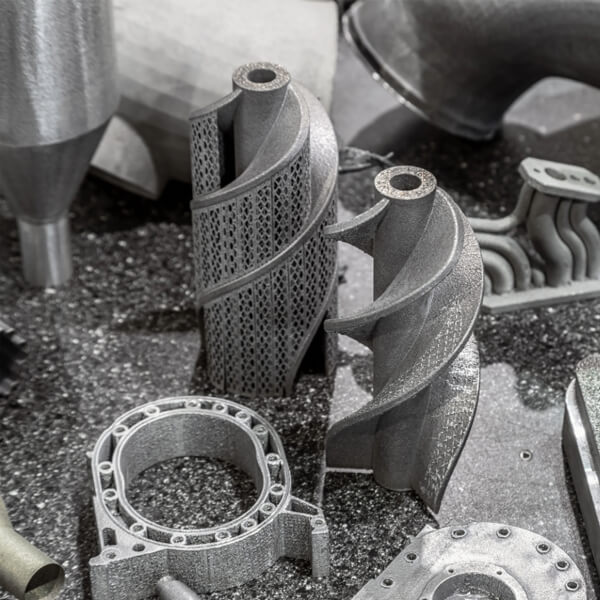
There is often a misconception about 3D Printed parts being used solely for prototyping. In recent years Additive Manufacturing or 3D Printing has evolved in the types of materials available and building methods.
The short answer is yes, 3D printed parts can be used as end-use parts in various industries and applications. The use of 3D printing for end-use parts has been growing rapidly in recent years due to advancements in technology, materials, and printing processes.
Using Additive Manufacturing for end use parts depends on several key factors that include mechanical strength, material resistance to flame, smoke, and toxicity (FST) and other performance and safety requirements for use in aerospace, automotive, and electronics industries.
While 3D printing was initially used primarily for rapid prototyping, it has evolved to produce functional and durable parts suitable for end-use. The key factors influencing the use of 3D printed parts as end-use components include:
- Material Selection: With a wide range of materials available for 3D printing, including plastics, metals, ceramics, and composites, it is possible to find materials that possess the necessary mechanical properties, such as strength, flexibility, and heat resistance, required for specific end-use applications.
- Manufacturing Processes: Different 3D printing technologies, such as selective laser sintering (SLS), fused deposition modeling (FDM), stereolithography (SLA), and direct metal laser sintering (DMLS), offer varying degrees of accuracy, surface finish, and mechanical properties. The choice of the 3D printing process depends on the requirements of the end-use part.
- Design Considerations: Designing parts specifically for 3D printing allows for optimization and customization to suit the application. Complex geometries, internal structures, and lightweight designs can be achieved, providing benefits such as reduced weight, enhanced functionality, and improved performance.
- Quality Control: Stringent quality control measures, including post-processing techniques like polishing, sanding, or heat treatment, can be employed to ensure the final 3D printed parts meet the desired specifications and functional requirements.
- Industry Applications: 3D printed end-use parts find applications across various industries, including automotive, aerospace, medical, consumer products, and industrial equipment. Examples include custom orthopedic implants, interior components for automobiles, aircraft components, tooling, and production aids.
It’s worth noting that while 3D printed parts can be suitable for many end-use applications, traditional manufacturing methods may still be preferred for certain applications where factors such as cost, volume production, or specific material properties play a significant role.
Materials
The options of available materials for additive manufacturing (AM) is continually expanding and encompasses a wide range of materials with diverse properties and applications. These materials can be classified into several categories based on their composition, characteristics, and suitability for specific AM processes. Here are some of the main categories of materials used in additive manufacturing:
- Polymers (Plastics): Polymers are the most commonly used materials in additive manufacturing due to their versatility, affordability, and ease of processing. They include thermoplastics, thermosets, and elastomers, with properties ranging from rigid and durable to flexible and rubber-like. Examples include ABS, PLA, PETG, nylon, TPU, and polypropylene.
- Metals: Metal additive manufacturing, also known as metal 3D printing, involves the deposition of metal powders layer by layer to create parts with complex geometries and high mechanical properties. Metals used in additive manufacturing include stainless steel, titanium, aluminum, nickel alloys, cobalt-chrome alloys, and precious metals like gold and silver.
- Ceramics: Ceramic materials offer high-temperature resistance, chemical inertness, and excellent mechanical properties, making them suitable for applications in aerospace, electronics, and biomedical fields. Common ceramic materials used in additive manufacturing include alumina, zirconia, silicon carbide, and silicon nitride.
- Composites: Composite materials combine two or more materials with different properties to create parts with enhanced performance characteristics such as strength, stiffness, and lightweight. Composites used in additive manufacturing include carbon fiber-reinforced polymers (CFRP), glass fiber-reinforced polymers (GFRP), and metal matrix composites (MMCs).
- Bioinks and Biomaterials: Additive manufacturing is increasingly being used in biomedical applications to fabricate tissue scaffolds, implants, and medical devices using biocompatible materials such as hydrogels, biodegradable polymers, and bioactive ceramics. These materials enable the fabrication of custom-designed implants tailored to individual patient needs.
- Electronics and Conductive Materials: Additive manufacturing techniques such as inkjet printing and aerosol jet printing can deposit conductive inks and functional materials onto substrates to create electronic components, sensors, and circuitry. Materials include conductive polymers, silver nanoparticles, graphene, and carbon nanotubes.
- Food and Edible Materials: Food-grade materials such as chocolate, sugar, and dough can be used in additive manufacturing to create edible creations, decorative items, and personalized confections. Additive manufacturing technology enables precise control over ingredient deposition and layering to produce intricate designs and textures.
- Recycled and Sustainable Materials: With a growing focus on sustainability, researchers are exploring the use of recycled plastics, biodegradable polymers, and sustainable materials derived from biomass sources such as algae, cornstarch, and cellulose for additive manufacturing applications.
Building Process
With additive manufacturing, products can be manufactured on-demand, eliminating the need for large inventories and warehousing. This reduces the risk of overstocking or stock outs, optimizes inventory management, and minimizes the impact of demand fluctuations on the supply chain. It also eliminates the need for tooling or molds to produce the parts, ultimately saving thousands of dollars in tooling costs.
Send us your designs for a free evaluation to see what process would be best to build your parts.
______
Developing Ideas From Concept To Product®
3D Innovations is a Product Development Company – from the 3D Design to a fully functional 3D Prototype & Product.
Connect with us on Twitter, Facebook, Instagram, & LinkedIn today.

